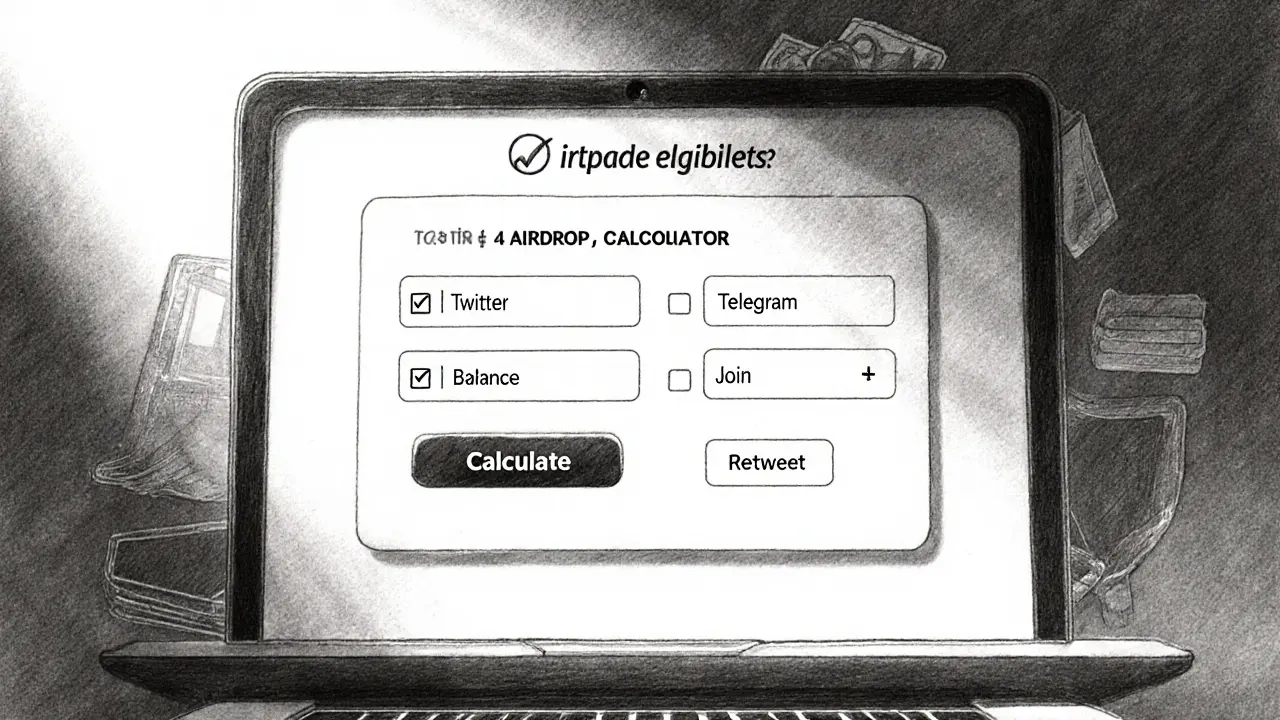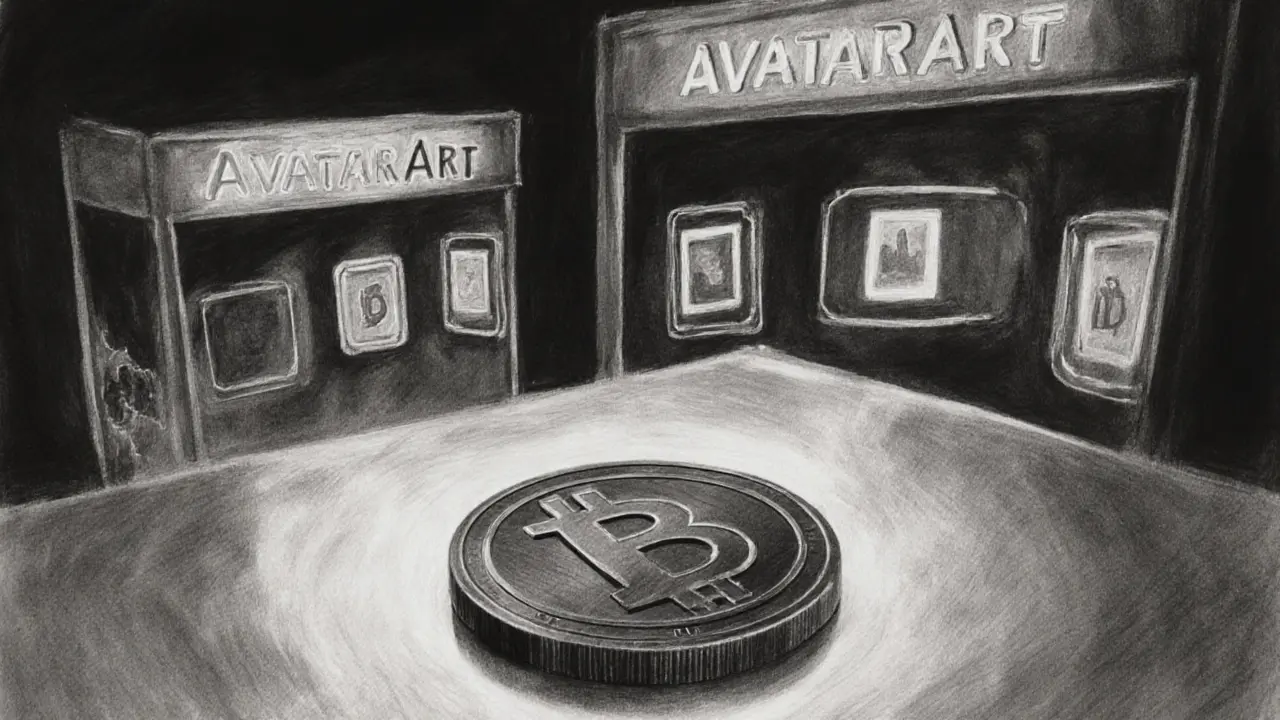ByteNext (BNU) Airdrop Calculator
Airdrop Details
Total airdrop pool: 25,000 BNU
Total token supply: 200,000,000 BNU
Current market price: $0.000603
Market cap: $120,000
Potential Airdrop Allocation
Important Notice
Note: All major exchanges have halted BNU trading. Even if you qualify for the airdrop, you won't be able to sell the tokens until trading resumes.
Wondering if the ByteNext airdrop is worth your time? Below you’ll get a clear picture of what the program offers, who can claim it, and why the token’s current market state matters for anyone eyeing a free BNU allocation.
- ByteNext runs the AvatarArt NFT marketplace on Binance Smart Chain.
- The community airdrop promises 25,000 BNU tokens to eligible participants.
- Token supply is fixed at 200million, but liquidity has dried up since exchanges halted trading mid‑September2025.
- Use cases include payments, advertising, staking, voting, and governance within AvatarArt.
- Risks: no active markets, price down >99% from all‑time high, and unclear project updates.
What is ByteNext and the BNU token?
ByteNext is a cryptocurrency project that powers the AvatarArt platform, an NFT marketplace built on the Binance Smart Chain. The native token, BNU, serves multiple utility functions: paying transaction fees, buying ad slots for 3‑D exhibitions, rewarding creators, staking, voting on artwork, and governance of platform upgrades.
Both the total and circulating supply sit at 200million tokens, a figure that hasn’t changed since launch. As of October2025 the token trades at roughly $0.000603 on Coinbase, translating to a market cap of about $120k. Compared to its all‑time high of $0.000741, the price has slipped nearly 99.9%.
Why the airdrop matters now
The “ByteNext 25,000BNU Community Airdrop Program” is positioned as a way to attract fresh users without asking for an upfront investment. In theory, free tokens let participants explore AvatarArt’s features-like minting an NFT or staking BNU for rewards-without risking capital.
However, the timing is critical. Around 15days ago, all listed exchanges stopped trading BNU, leaving the token effectively illiquid. Without a market, even a generous airdrop can feel like a gift you can’t use. Prospective claimants need to weigh the experimental nature of the platform against the practical challenge of converting BNU into other assets.
Eligibility criteria and claim process
Official sources have been sparse, but the community consensus points to a few common requirements:
- Hold a minimum of 100BNU in a supported wallet (e.g., Trust Wallet or MetaMask) before the snapshot date.
- Follow ByteNext’s official Twitter (@bytenextio) and retweet the airdrop announcement.
- Join the Telegram group and submit your wallet address via the pinned airdrop bot.
- Complete a short KYC form if asked, though many participants report it’s optional.
After verification, the 25,000BNU pool is split proportionally among qualifying wallets. The distribution typically occurs within two weeks of the snapshot.
Token utility breakdown
| Use Case | What It Enables | Benefit to Holders |
|---|---|---|
| Payments | Settles NFT purchases and platform fees | Lower transaction costs vs. BNB |
| Advertising | Buys spotlight slots in 3‑D virtual galleries | Increased visibility for artists |
| Authorization | Compensates creators when their art is resold | Passive royalty income |
| Staking & Farming | Locks BNU in liquidity pools to earn rewards | Earn additional BNU or partner tokens |
| Voting | Lets holders rate artworks and influence curation | Community influence and engagement |
| Governance | Votes on protocol upgrades and fee structures | Direct role in platform evolution |
These utilities are only as valuable as the underlying platform’s activity. With trading halted, most of the economic incentives (like staking rewards) are currently frozen.

Market health and trading halt impact
Data from CoinGecko, CoinMarketCap, and Binance all show near‑zero volume for BNU. Coinbase lists a 24‑hour volume of just $6.36, while other trackers report $0. This liquidity crunch means even if you receive the airdrop, selling the tokens will likely require finding a private buyer or waiting for exchange relistings.
The price chart tells a sobering story: a 3% dip over the past month, but a 51% decline over the last year. The token sits only 9.9% above its historic low, suggesting limited upside unless the platform re‑gains traction.
Risks and red flags to watch
- Liquidity freeze: No active order books on major exchanges.
- Development opacity: Limited recent commits on the GitHub repo and sparse community updates.
- Regulatory uncertainty: The sudden halt could hint at compliance concerns.
- Price volatility: Past crashes show the token can lose value quickly.
If you’re comfortable with speculative, long‑term projects, the airdrop might still be a fun way to explore AvatarArt. If you need near‑term liquidity, the current environment is unfavorable.
How to make the most of a potential airdrop
- Secure a compatible wallet and add the BNU contract address (0x4954…0a7b77).
- Follow all social‑media steps to qualify before the snapshot.
- If you receive BNU, stake it in any available pool as soon as the platform reopens trading.
- Monitor official channels for exchange relist announcements; Binance and Coinbase have historically been the primary venues.
- Consider converting BNU to a more liquid asset (e.g., BNB) once trading resumes, to lock in any gains.
Future outlook for ByteNext
The success of the airdrop hinges on ByteNext’s ability to restore market activity. The team has hinted at upcoming platform upgrades and new artist partnerships, but concrete timelines are missing. If the AvatarArt marketplace can attract a critical mass of creators and buyers, BNU’s utility could rebound, making the free tokens valuable retroactively.
Conversely, prolonged trading suspension may push the project into dormancy. Investors should treat the airdrop as a high‑risk experiment rather than a guaranteed profit source.
Frequently Asked Questions
What is the exact amount of BNU being airdropped?
The program allocates a total of 25,000 BNU tokens, distributed proportionally among eligible wallets.
When does the snapshot for the airdrop occur?
Community reports suggest the snapshot is taken on the first Monday of each month, but users should verify the exact date on ByteNext’s official Twitter.
Can I sell the airdropped BNU now?
No. All major exchanges have halted BNU trading, so you would need to wait for a relisting or find a private buyer.
What are the main utilities of BNU on AvatarArt?
BNU can be used for payments, advertising placement, creator royalties, staking/farming, voting on artwork, and governance decisions.
Is the ByteNext project still being developed?
The GitHub repository shows occasional commits, but overall activity has slowed, and there are no recent major announcements.


The airdrop certainly looks intriguing, but it's essential to weigh the liquidity constraints; given the current halt on exchanges, participants should treat the allocation as speculative, not guaranteed profit; moreover, understanding the token's utility within AvatarArt can help assess long‑term value; therefore, a cautious approach-perhaps allocating only a small portion of one's portfolio-is advisable; finally, staying updated on any exchange relist announcements will be key.
From a national perspective, allocating resources to a token with no active market undermines fiscal prudence.
This airdrop is nothing but a gimmick designed to milk desperate users; the token's liquidity freeze makes any supposed reward meaningless.
Even with the current limitations, participating can offer a low‑risk way to get a feel for the ecosystem; just ensure you meet all the social criteria and keep an eye on future updates.
Hey folks 😊, anyone know if ByteNext has hinted at a timeline for relisting BNU on major exchanges? The community chatter seems hopeful, but specifics are scarce.
I heard they might drop a note soon, just stay tuned.
Dive into the AvatarArt marketplace now and you’ll discover that BNU isn’t just a token; it fuels vibrant 3‑D galleries, empowers creators, and even sprinkles royalties like confetti for artists-so the airdrop could be your ticket to a creative playground!
Honestly, if you’re waiting for market magic, you’re wasting time – just grab the BNU and wait for the hype to catch up!
I think the hype is overblown; better to skip this airdrop.
In light of the current trading suspension, a prudent investor must first evaluate the underlying utility of BNU within the AvatarArt platform. The token’s role in payments, advertising, and governance suggests intrinsic value beyond mere speculation. However, without a liquid market, converting that value into fiat or other crypto remains problematic. Consequently, any allocation should be proportionate to one’s risk tolerance and long‑term outlook.
Yo, who even cares about a paused token? Skip the drama.
hey u can still hold BNU for future use even if u cant sell rn. just keep safe in a trustet wallet.
While the market is frozen, consider staking BNU once the platform reopens; this could generate modest rewards and keep your holdings active.
The ByteNext airdrop, when examined through a philosophical lens, raises profound questions about value, perception, and the nature of digital scarcity; one must contemplate whether a token, devoid of immediate exchange liquidity, can truly embody economic worth; historically, speculative assets have thrived on collective belief, yet belief itself requires a conduit of trade to manifest; the suspension of BNU on major exchanges removes that conduit, leaving participants in a liminal state of anticipation; nevertheless, the token’s utility within AvatarArt-facilitating payments, rewarding creators, and governing platform evolution-provides a non‑monetary anchor, a raison d’être that may sustain relevance; if the community rallies around these utilities, a secondary market could organically emerge, driven by demand for functional features rather than speculative profit; the upcoming platform upgrades, hinted at but not yet detailed, could act as catalysts, potentially re‑energizing interest; conversely, prolonged inactivity may erode confidence, relegating BNU to a digital relic; participants should therefore adopt a dual‑track strategy, balancing the hope of future utility against the reality of current illiquidity; diversification across assets, even within the crypto sphere, remains a timeless principle; allocating a modest fraction of capital to BNU, if one is comfortable with high risk, aligns with the classic risk‑reward paradigm; yet, it is paramount to monitor official channels for any hints of exchange relistings, as such events could dramatically shift the token’s trajectory; in the interim, engaging with the AvatarArt community-creating, curating, and staking-may generate intrinsic satisfaction independent of price; ultimately, the airdrop serves as both a test of faith and a gateway to potential participation in a nascent ecosystem; whether this gateway leads to a bustling marketplace or a quiet archive depends largely on collective action, developer commitment, and market conditions.
The presented analysis, while thorough, fails to address the fundamental flaw; without market liquidity, the token's theoretical utility is moot; this oversight undermines the credibility of the outlook.
Oh great, another token nobody can trade.